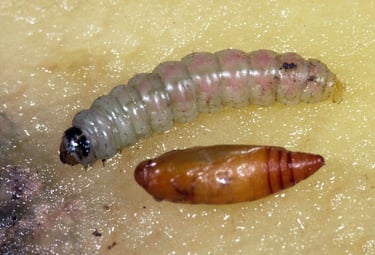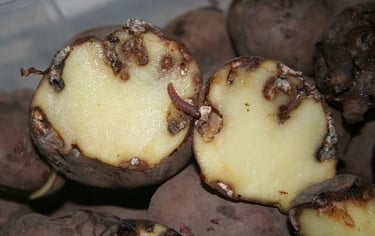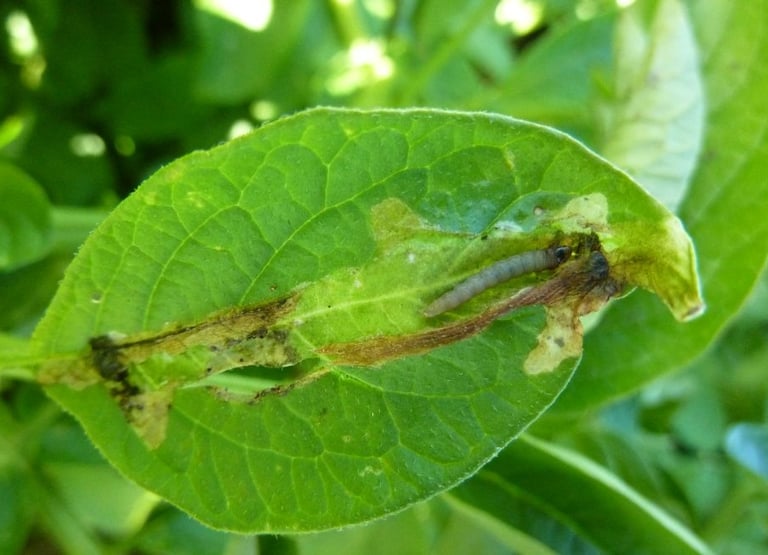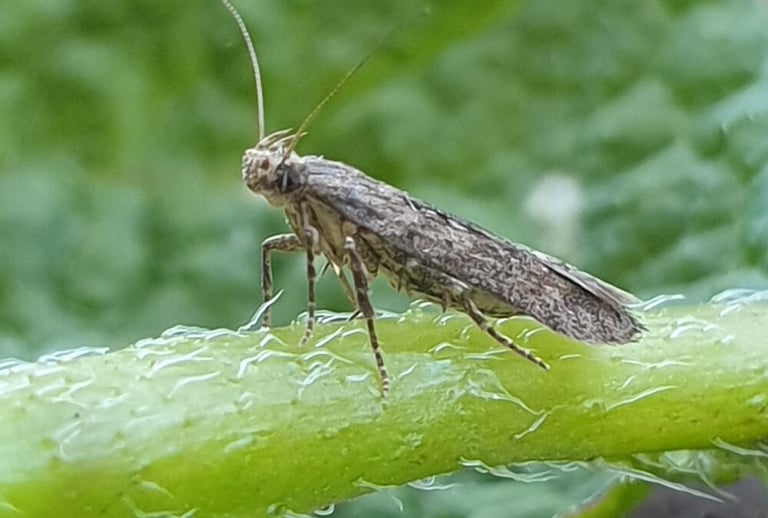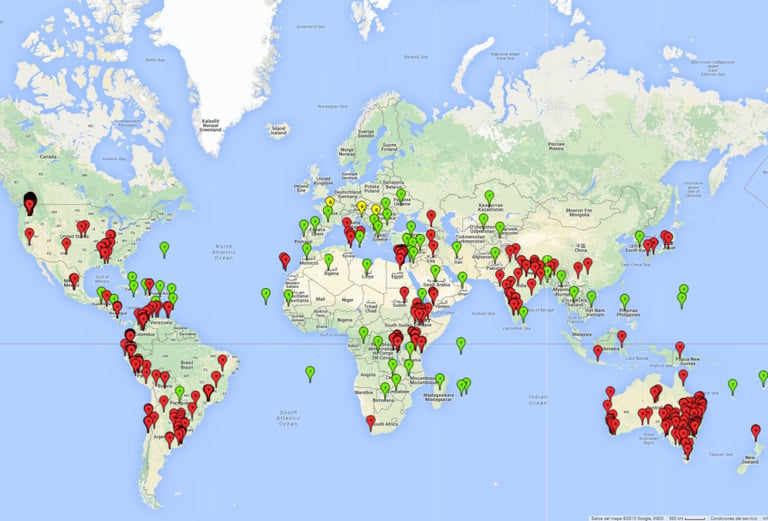Invasive pest-Potato Tuber Moth, Phthorimaea operculella (Lepidoptera : Gelechiidae)
Phthorimaea operculella, (Lepidoptera, Gelechidae) is important cosmopolitan pest of potato, especially in warm temperate and tropical regions where host plants are grown.
Insect pests are one of the major constraints to commercial production of potato in India. According to Simpson (1977), potato is damaged by at least 101 arthropod pests, of which Potato tuber moth (PTM) Phthorimaea operculella, (Lepidoptera, Gelechidae) is cosmopolitan pest, especially in warm temperate and tropical regions where host plants are grown and has been reported from more than 90 countries in Africa, Asia, Europe, Americas and Oceania (Australia and New Zealand). P. operculella is an important pest occurring globally (Radcliffe, 1982). Depending on climatic conditions, it produces 2–8 generations per year.
P. operculella is known by several common names as potato tuber moth, potato tuber worm, potato moth, potato leaf miner and tobacco leaf miner. Although two other species of tuberworm can be found, Tecia solanivora (Povolny), the Guatemalan potato moth, restricted to Central and Northwest South America, and Symmetrischema plaesiosema (Turner) (=Symmetrischema tangolis (Gyen)), the Andean potato tuber moth, found in South America, Southeast Australia, and Philippines, they are of importance to the specific regions. Phthorimaea operculella is an oligophagous pest (i.e., an insect feeding on a restricted range of food plants) of vegetable crops that belongs mainly to the family Solanaceae. Potato (Solanum tuberosum L.), tomato (Lycopersicon esculentum Mill.), and tobacco (Nicotana tabacum L.) are principal hosts; however, the pest also attacks eggplant (Solanum melongena L.), bell pepper (Capsium annuum L.), Cape gooseberry (Physalis peruviana L.), aubergine (S. melongena L.), and sugar beet (Beta vulgaris L.) of the family Chenopodiaceae. Further, wild species of the Solanaceae family, including important weeds (e.g., black night shade, Solanum nigrum L.), are reported hosts. In total, the host range comprises 60 species.
P. operculella most likely originated in Western South America along with its main host, the potato. PTM was introduced into India in 1906 through seed potato imported from Italy (Lefroy, 1907). It has now established in parts of Maharashtra (winter and rainy crops), Plateau of Karnataka, Tamil Nadu, Mid hills especially in Kangra valley of Himachal Pradesh, North eastern region – Meghalya, Parts of Madhya Pradesh (Malva region) and some parts of Uttarakhand, Bihar and Chhattisgarh (Trivedi and Rajagopal, 1992), North-eastern hill states and plateau region (Saxena, 1983).
In potato, the larva attacks all vegetative plant parts of the crop. Typical symptoms of leaf damage are mines caused by larvae feeding in the mesophyll, without damaging the upper and lower epidermis. Other entry points are leaf axils and the growing points of young plants. The foliage can be completely destroyed. Moths lay eggs through soil cracks on the developing tubers, which can cause high tuber damage at harvest. Tuber infestation caused by first instar larvae can be hard to detect, such that even with precautionary measures infested tubers are transferred to potato stores. Characteristic piles of feces indicate infestation; inside tubers, larvae bore irregular galleries that may run into the interior of the tubers or remain directly under the skin.
Economic impact
Potato foliage can be completely destroyed, resulting in substantial yield loss. Especially high infestations early in the season can directly affect tuber yield. There is strong correlation between leaf and consequent tuber infestation; this suggests that reducing the P. operculella population density during the potato-growing period is key to reducing tuber infestation at harvest. Hence, the most devastating yield losses (up to 70%) are largely a result of earlier tuber infestation in the field, generally where moths have laid eggs through soil cracks on the developing tubers, or when harvest is delayed. Potatoes in rustic stores can be damaged completely within a few months if the tubers are left untreated. Infested tubers are unsuitable not only for human consumption but also for use as seed. Infested tubers produce lower yields and initiate a fast development of a new field population. In tobacco, the moth is generally considered a minor pest; however, recently (since 2007) P. operculella has become a major pest in tobacco plantings in the U.S. state of North Carolina. In Mediterranean countries of North Africa (e.g., Egypt), the moth causes significant crop damage in tomato. The losses in stored potatoes ranging from 50% in Yemen and Peru; 86% in Tunisia, Algeria and Turkey; 90% in Kenya; and 100% in India and the Philippines have been reported (Aryal and Chuleni, 2015). In Egypt, potato tuber moth has caused up to 100% losses to potato in fields as well as in storage. P. operculella has been found to cause 30-70% infestation in country stores in India where modern cold storage facilities are inadequate. Up to 100% tuber infestation is reported from Karnataka (Nair and Rao, 1972; Saxena and Raj, 1979; Raman, 1982). Global climate change scenarios have alarmed the possibilities of the pest becoming more severe and expanding from its current habitat to newer area of potato production posing greater plant quarantine concerns (Sporleder 2008; Kroschel et al., 2013).
Adaptation to risk avoidance at farm level
Given the global importance of the potato tuber moth P. operculella, the most effective pest control is achieved through integrated pest management when a range of management methods are applied. Thereby, management techniques focus on both prevention of storage infestation and control of the pest in the field.
Control and Management at Crop and Field Level
During field trials and experiments in potato crop; our BraveHawk Series Devices shown quite promising results. The deployment of BraveHawk Series Devices in field resulted in 98% reduction in yield loss over conventional crop protection methods.

